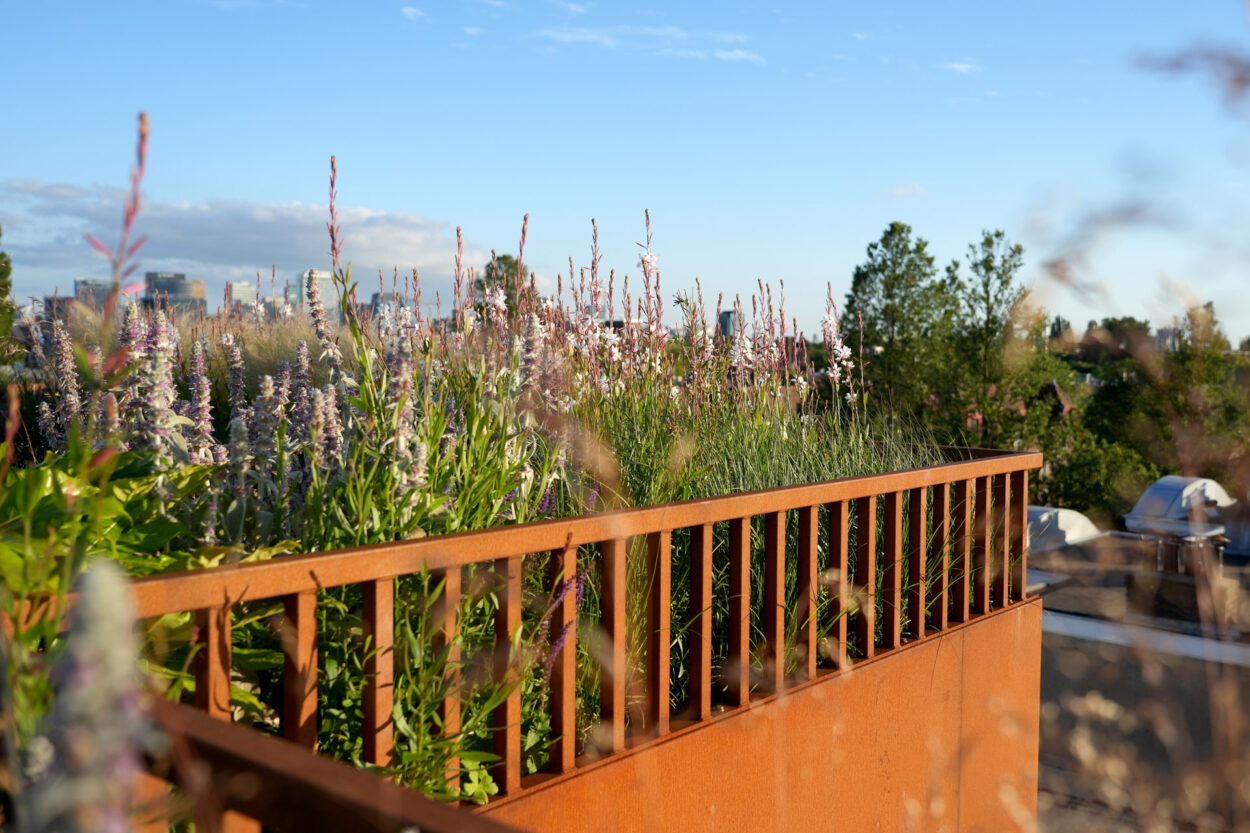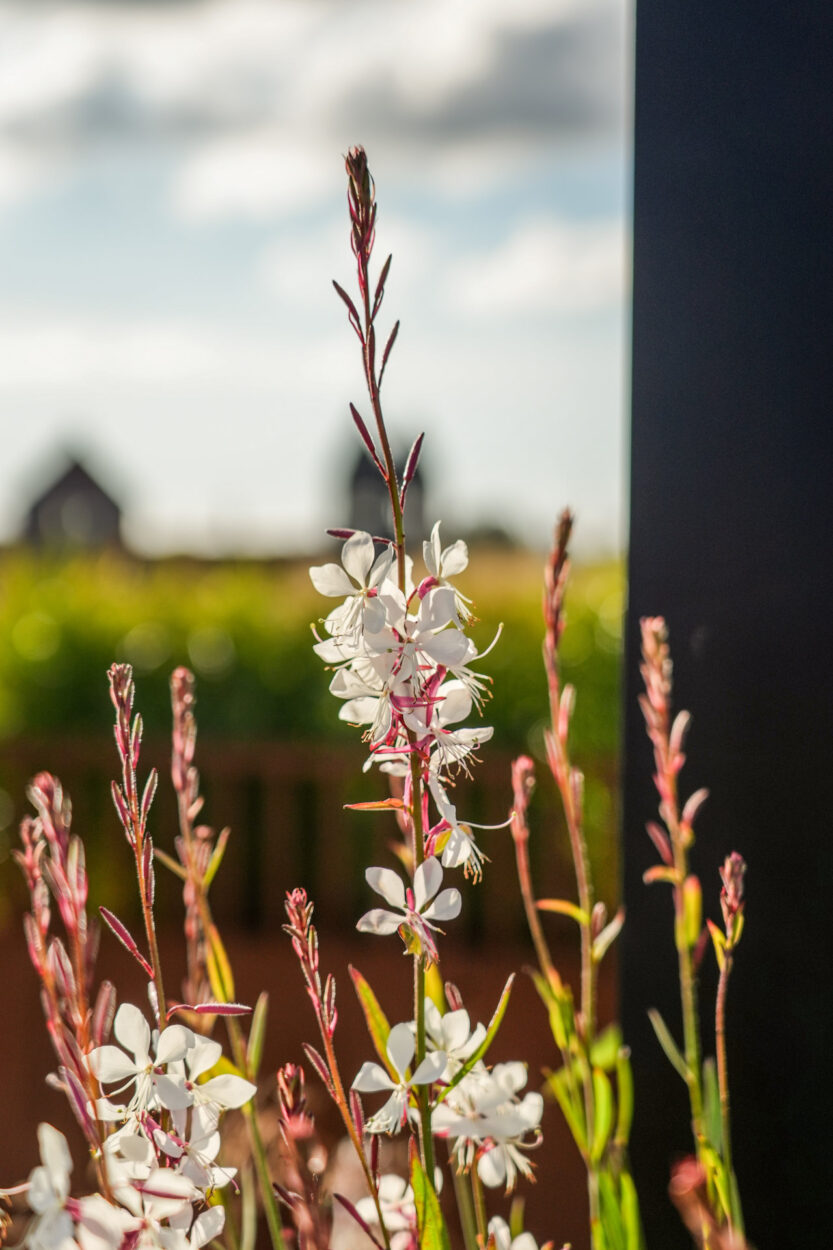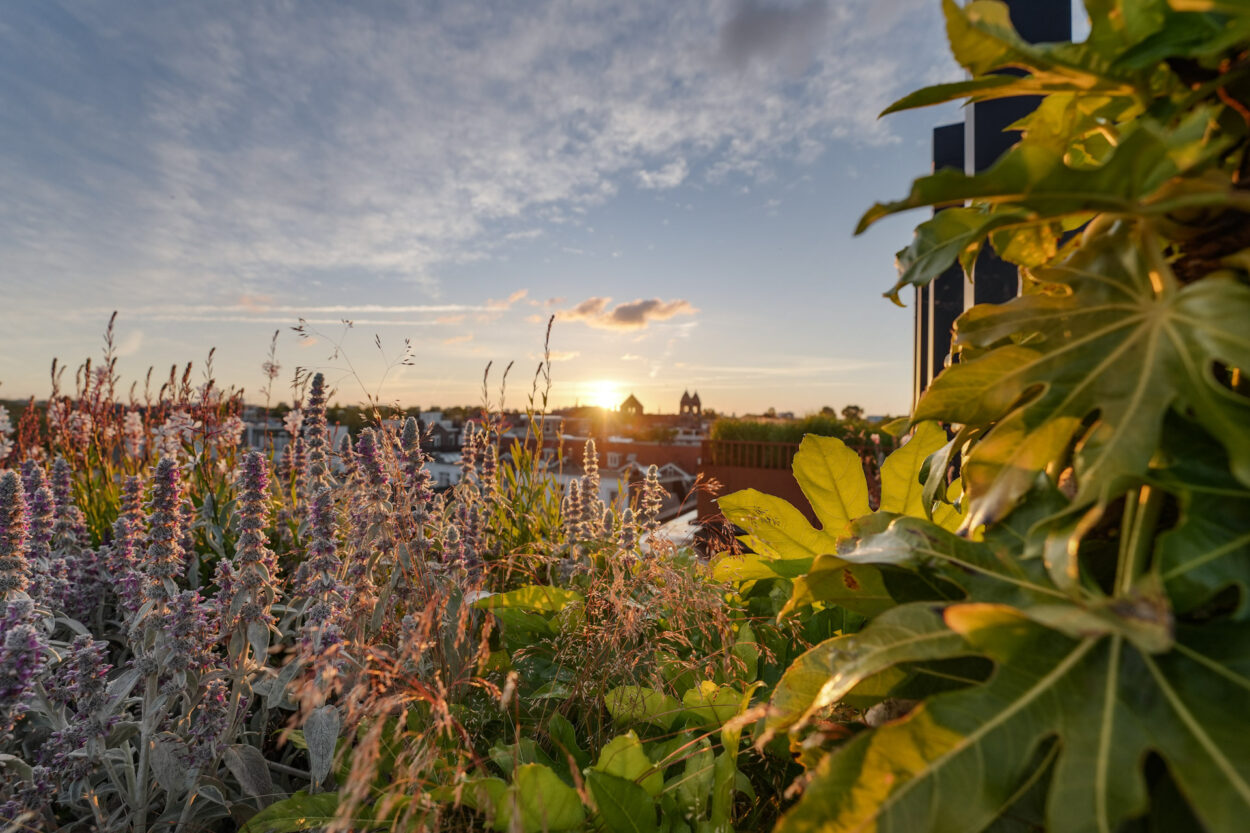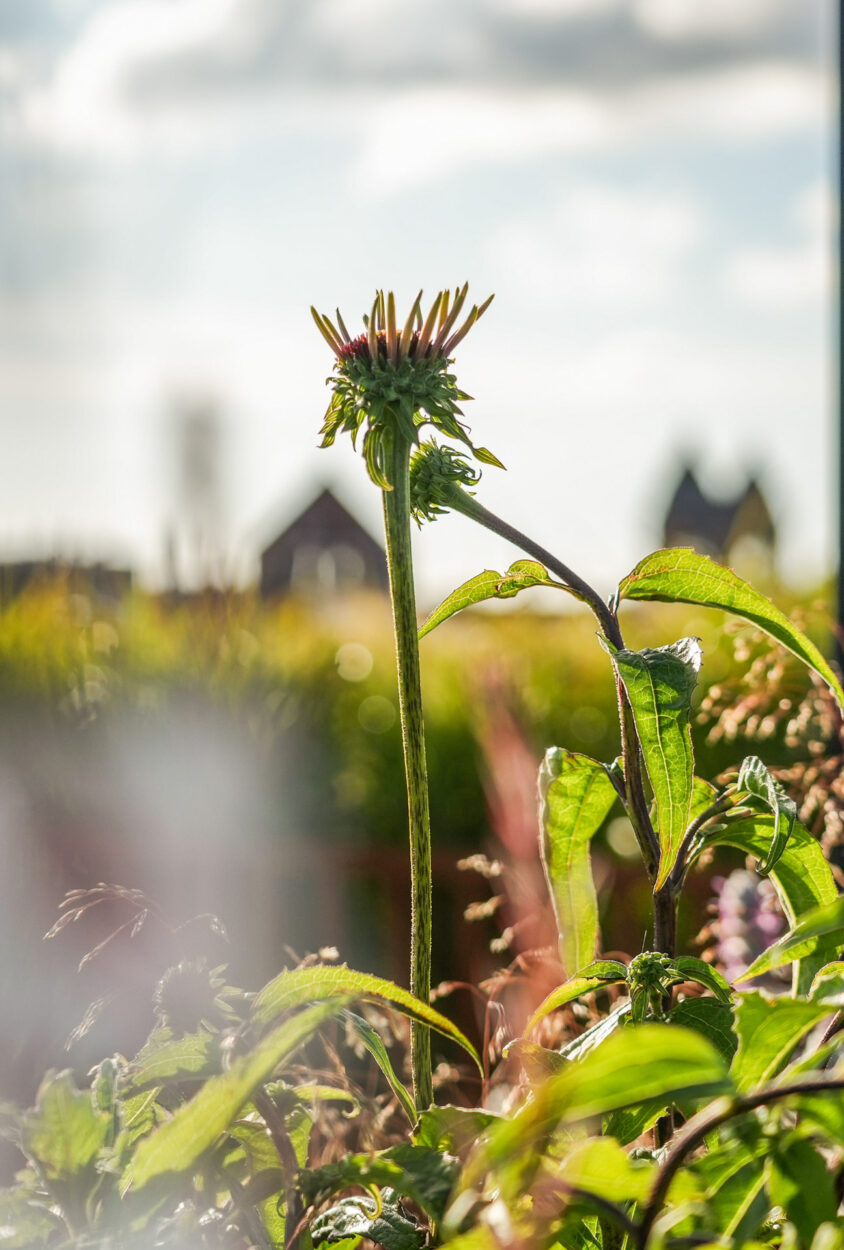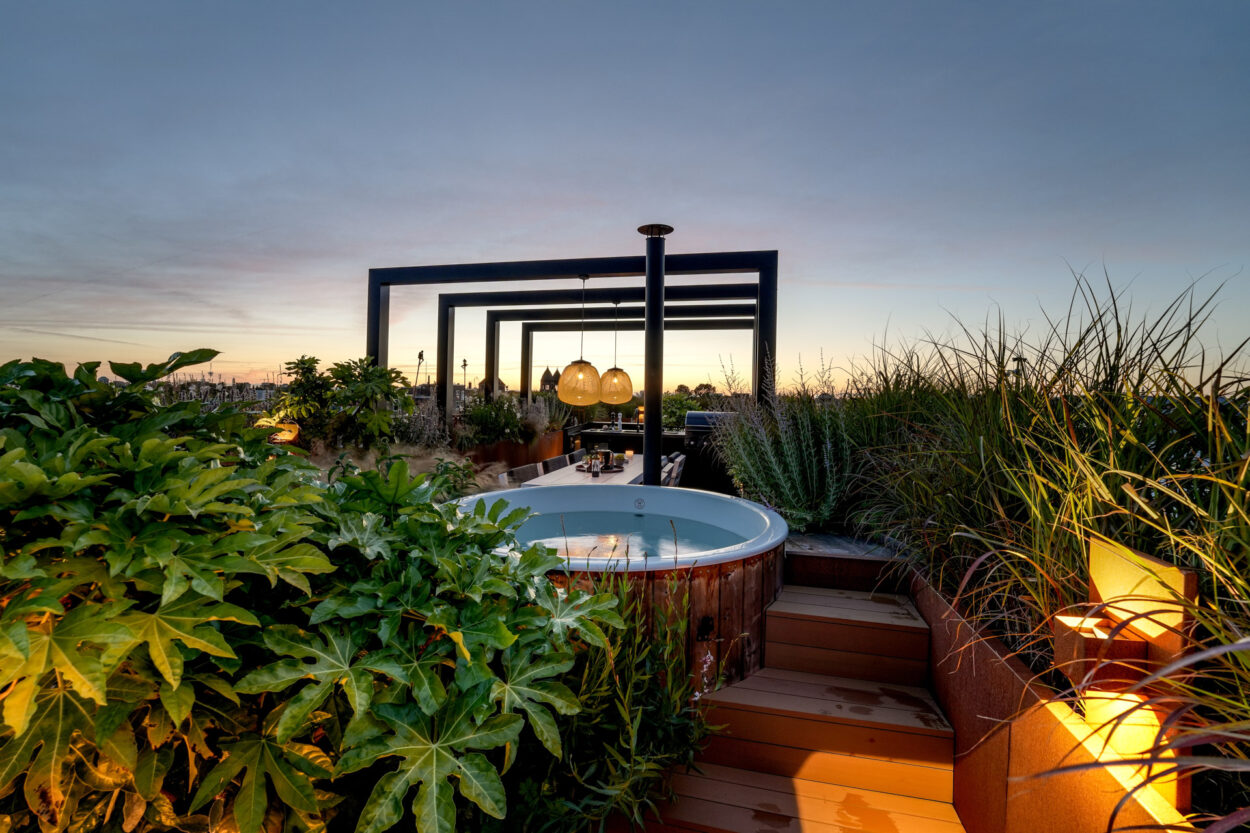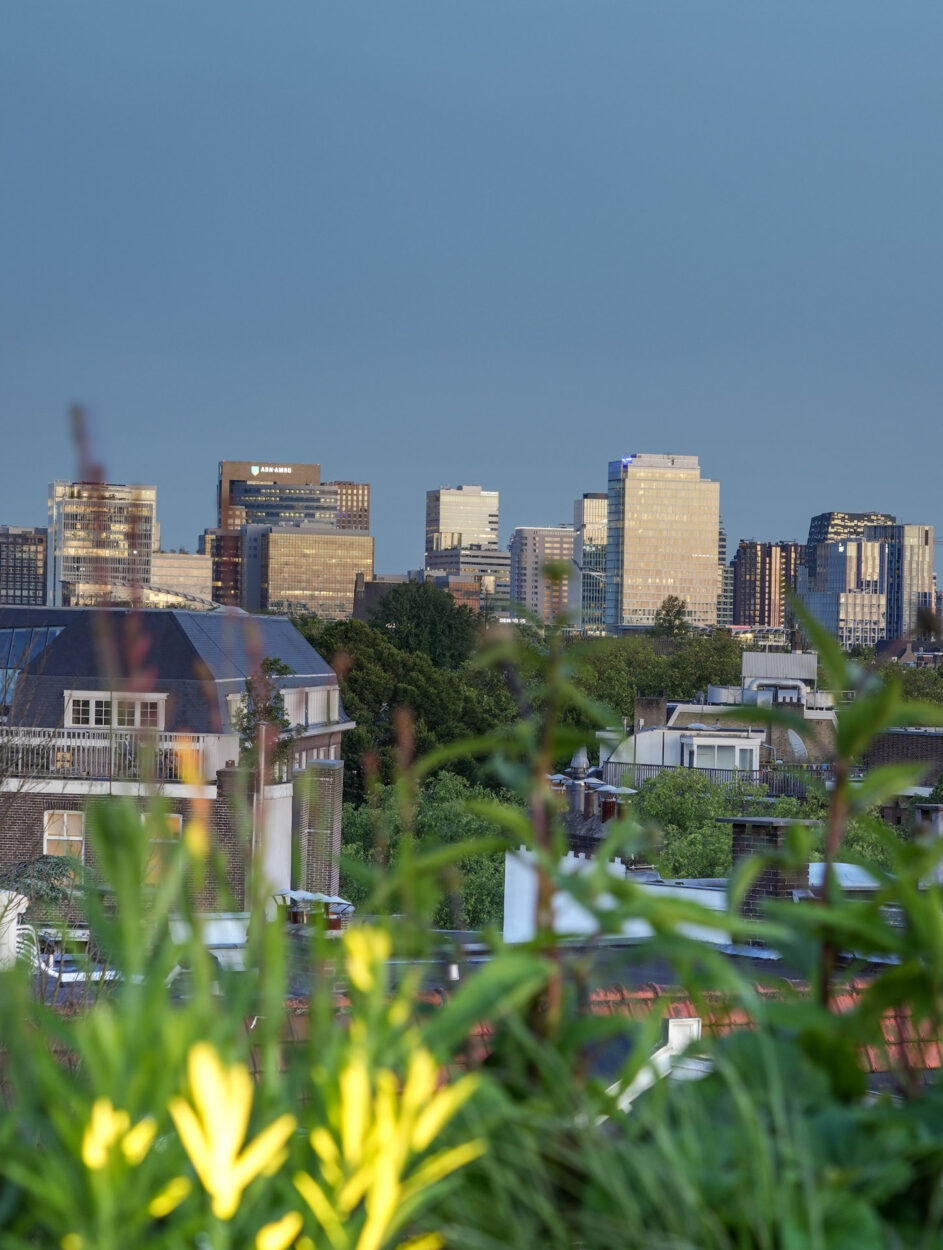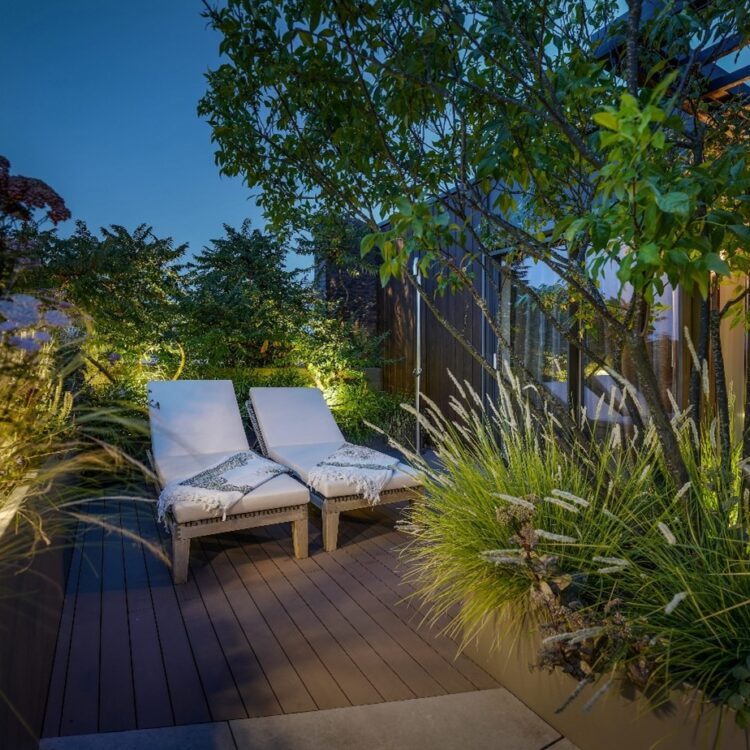
At a time when cities are facing the adverse effects of climate change, pollution and a decline in natural habitats, the importance of biodiversity is becoming increasingly urgent. Garden Vision therefore creates luxurious richly planted roof gardens in cities which has a huge positive impact. These green oases contribute not only to a healthier environment, but also to restoring a diverse ecosystem within the concrete jungle of our cities.
Take our most recent example on the sixth floor in Amsterdam-Zuid. This exuberantly flowering roof terrace is not only a visual treat, but also a green oasis of luxury and wellness. The rooftop terrace offers panoramic views of Amsterdam, where the urban skyline blends harmoniously with the serene beauty of the planted greenery.

The concept of roof gardens is not new; they have been used for centuries. What is recent is the rise in their popularity as a solution to urban ecological problems. Modern roof gardens can even fully function as ecosystems, with an important role for insects, birds and other animals.
1. Fauna
In urban areas, space for plants and animals is often limited. Richly planted roof gardens like this one serve as microhabitats where animals such as bees, butterflies, birds and small mammals can find food and shelter. These gardens form mini-ecosystems where these species can flourish, even in the middle of the city.


Roof gardens can also act as’stepping stones’ for animal species, allowing them to move from one green area to another without having to travel through fully urbanised parts.
2. Promoting insect populations
Insects play a crucial role in biodiversity. They provide pollination, natural pest control and decomposition of organic matter. Roof gardens like these provide a home to a wide range of insects, especially pollinators such as bees and butterflies.


3. Plant diversity
Selecting a diverse mix of native plants for roof gardens is essential for supporting local ecosystems. We engaged studioREDD for a balanced planting plan and design. Native plants are better adapted to local conditions and they provide food and hiding places for local wildlife. By using a variety of plants in this project, this rooftop contributes to increasing plant diversity, which in turn increases the complexity of the ecosystem.
4. Aesthetic and social benefits
Besides their ecological benefits , roof gardens also have social and aesthetic value. They provide greenery in the city, which increases the quality of life of residents and has a calming effect . So too on this roof terrace in Amsterdam, here residents can enjoy the best the outdoors has to offer, right in the middle of the bustling city.

This roof garden in Amsterdam is a fine example. The raised planters, not only provide a stylish and natural privacy and noise barrier but also act as fall protection. Partially filled with lava for roof loading, we were able to comply with all permits. The steel containers are planted with lush prairie plants and dancing grasses, creating a sense of seclusion without disturbing the open character of the roof terrace. The planting on the roof terrace has been carefully composed and is also maintained by Garden Vision to encourage maximum flowering.
Future-oriented
As cities become increasingly populated , we believe it is important to contribute contribute to new ways of increasing urban biodiversity.

In our view , municipalities, architects, urban planners and citizens should work even more together to fully exploit the potential of roof gardens. By implementing policies and regulations that encourage the creation of green roofs, we can transform cities into thriving ecosystems where nature and people live together in harmony.
See more of this project Artistic Floral Roofgarden and other roof gardens in our Portfolio.

